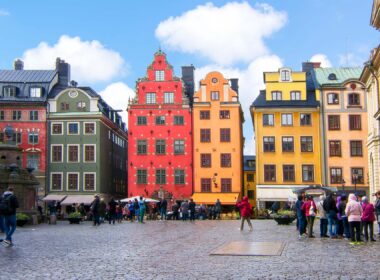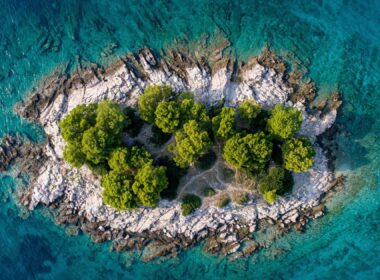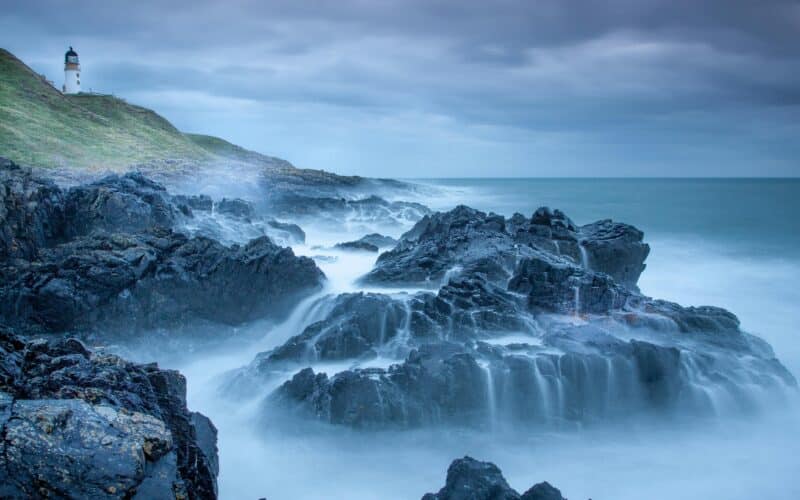Discover Scotland on a seven-day tour. From the bustle of Edinburgh to the vast Highlands, this journey promises a series of discoveries. This guide provides an in-depth look at Scotland’s rich legends, history, and breathtaking scenery.
When to visit Scotland ?
Visiting Scotland is a pleasant experience at any time of the year, yet some seasons offer more favorable conditions depending on your activities and the weather.
Spring (April to June) and Autumn (September to October) are considered the best times to visit Scotland if you’re looking to avoid crowds while enjoying nice weather conditions.
Spring sees the blossoming of hyacinths and cherry trees, while autumn brings colorful landscapes. These periods enjoy relatively stable weather, ideal for outdoor activities like hiking and golf.
Summer (June to August) represents the peak tourist season, characterized by warmer temperatures and sunny days, which are perfect for maximizing outdoor activities and enjoying numerous festivals. However, it’s also the busiest and often most expensive time to travel.
Winter (November to March) features shorter days and colder weather, making it an ideal time if you enjoy winter activities such as skiing in the Highlands.
May and September are often recommended to avoid both the summer crowds and the mosquito, while still enjoying pleasant temperatures and less rainfall.
The ideal itinerary for an 7 days in Scotland
Day 1-2 : Edinburgh
Begin your Scottish adventure in Edinburgh, delving into famous sites such as Edinburgh Castle, the Royal Mile, and Calton Hill for stunning city views.
Edinburgh Castle, located at the city’s heart, offers a glimpse into historical treasures like the Honours of Scotland. Ensure you book your tickets online in advance to secure entry !
Explore the Royal Mile, the historic street linking Edinburgh Castle with the Palace of Holyroodhouse. It is famed for its closes, narrow alleys that provide a deep dive into the medieval ambiance of the city. Here, you’ll find shops, restaurants, pubs, and notable sites like St Giles’ Cathedral and Gladstone’s Land, a 16th-century merchant’s house.
Calton Hill presents panoramic views of Edinburgh and is dotted with monuments like the Dugald Stewart Monument. For local activities, consider whisky tasting experiences at places like the Scotch Whisky Experience near the Royal Mile, offering guided tours that delve into the history and production of Scottish whisky.
Lastly, don’t miss Mary King’s Close for a unique experience exploring Edinburgh’s underground city. This attraction brings over four centuries of history to life through the stories of its former residents, with guided tours led by actors dressed as historical figures.
Accommodation Options
Edinburgh offers several lodging options. The 3-star Hotel Indigo Edinburgh provides a unique Victorian atmosphere, complete with a casino and restaurant.
For budget travelers, the Hoppo Backpackers Hostel near Tron Kirk Church offers a more economical choice.
Day 3 : Stirling and Loch Lomond
Start the day with a visit to Stirling Castle, an hour’s drive from Edinburgh. This fortress, where Mary, Queen of Scots was crowned, offers very nice views.
Then head to Loch Lomond, Scotland’s largest lake, located in the stunning Trossachs National Park. Here, you can take a lake cruise or enjoy a walk along its shores, soaking in the landscapes that have inspired countless songs and legends.
On your way back to Edinburgh, make a stop to see the Kelpies, the world’s largest equine sculptures.
Day 4-5 : Glencoe and the Isle of Skye
First, explore Glencoe, known for its red mountains and views of the Three Sisters.
Next, travel to the Isle of Skye. Highlights include the Old Man of Storr, especially nice for hikers. The trek to the summit takes about an hour from the parking area, and sturdy shoes are recommended.
You might also want to visit Fairy Glen, a magical landscape of small hills and rock formations that seem to emerge from a fairy tale.
Day 6 : Fort William and the Glenfinnan Viaduct
Stop in Fort William, a haven for outdoor enthusiasts. From there, head to the Glenfinnan Viaduct, famous from the Harry Potter films. Depending on the schedule, you might see the Jacobite train, often referred to as the Hogwarts Express, crossing the viaduct around 10:45 AM or 3:00 PM.
Day 7 : Return to Edinburgh via Pitlochry
On your way back to Edinburgh, pause in Pitlochry, known for its distilleries and natural setting. The town also offers numerous nature walks and shops for picking up last-minute souvenirs from Scotland.
This itinerary provides a comprehensive guide to exploring the rich landscapes and cultural heritage of Scotland over seven days. Each day is packed with unique experiences and insights into Scottish life !.
How to prepare for your trip to Scotland
Properly preparing for your trip to Scotland requires careful planning and selecting the right accommodations and restaurants. Consider your travel needs and preferences to choose the best places to stay and dine.
Transportation
Book your flight well in advance to secure the best rates. If you plan to rent a car, remember that driving is on the left side of the road in Scotland.
Public transportation, such as trains and buses, is also a viable option, especially with travel passes like the ScotRail ‘Spirit of Scotland’ Pass that covers many routes. This can significantly ease travel between cities and scenic areas.
For convenient booking of trains, planes, or rental cars, use platforms like Trazler. Trazler provides a tool to help you plan the logistical aspects of your trip to Scotland, allowing you to compare prices and book directly online.
Accommodation and dining
Scotland offers a range of accommodation options, from budget hostels to luxury hotels. Booking in advance is very important, especially during the high season (May to September), to avoid high prices and limited availability.
Scottish cuisine is rich and varied. Be sure to try local specialties like haggis, fresh seafood, and, of course, Scottish whisky. Local pubs often offer good quality meals at reasonable prices.
Practical tips
The weather in Scotland can be very changeable, so pack waterproof clothing and walking boots, as well as additional layers to accommodate temperature fluctuations.
Be cautious when driving in remote areas, always keep your fuel tank full, and use navigation apps to avoid getting lost and to plan your routes in advance.
How to prepare a trip to Scotland with Trazler
After a week full of discoveries, your journey through Scotland will leave you with lasting memories and a desire to return. Whether it was the wild landscapes of the Highlands, the historic cities of Edinburgh and Stirling, or the Isle of Skye, each part of your trip will have unveiled the natural and cultural riches of Scotland.Thanks to Trazler, planning and booking various aspects of your journey have never been simpler. From booking train tickets to arranging car rentals and flights, Trazler offers an integrated platform that simplifies every step of your journey. By opting for an all-inclusive service, you enjoy competitive rates and the assurance of a hassle-free stay.
The best time to visit Scotland is during the spring (April to June) and autumn (September to October), when the weather is pleasant and it’s less crowded.
When is the cheapest time to travel to Scotland ?
Consider traveling in the off-season, between November and March, when accommodation and activity prices are generally lower despite the colder weather.
Visit Edinburgh for its history, the Highlands for their spectacular landscapes, and the Isle of Skye for its natural beauty.
Consider traveling in the off-season, between November and March, when accommodation and activity prices are generally lower despite the colder weather.












